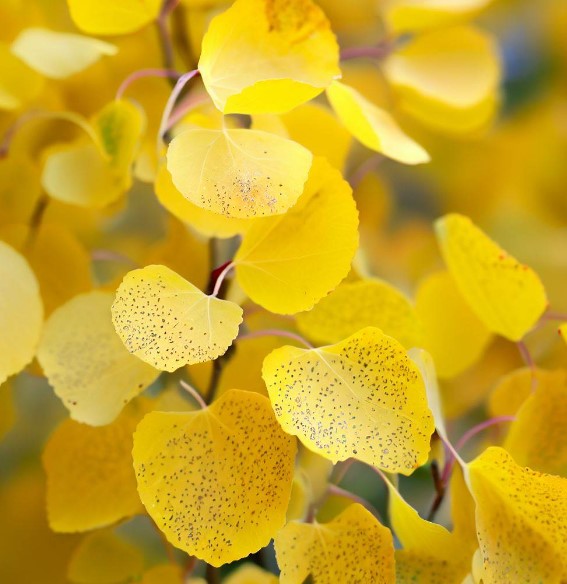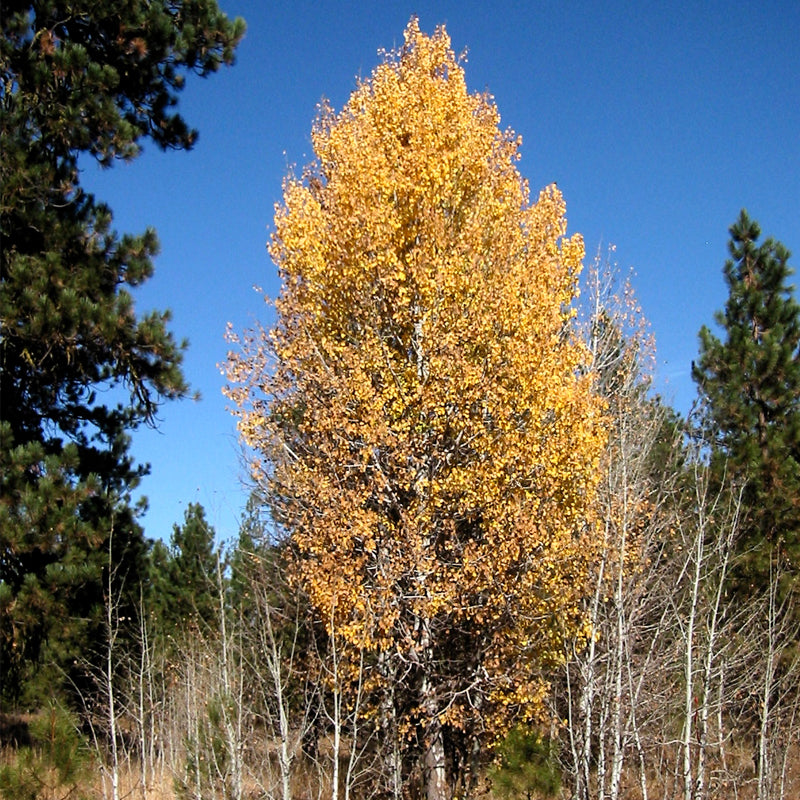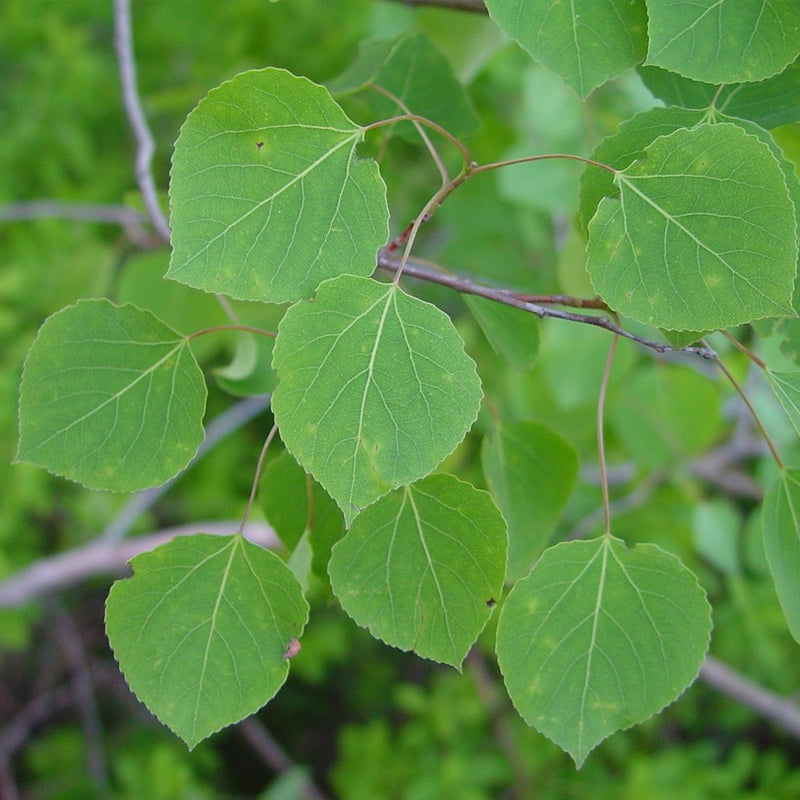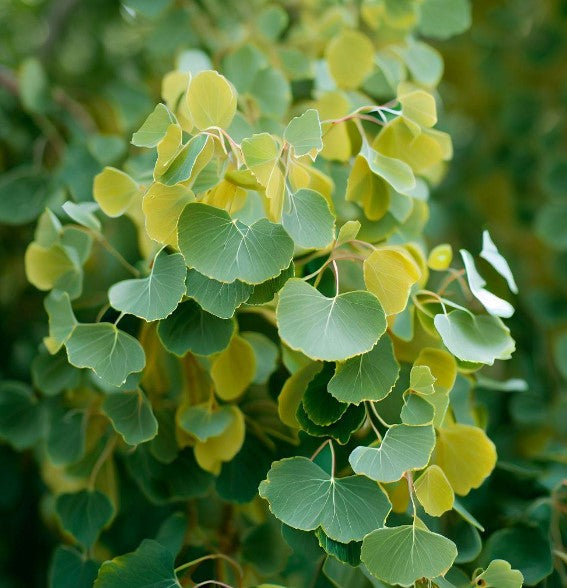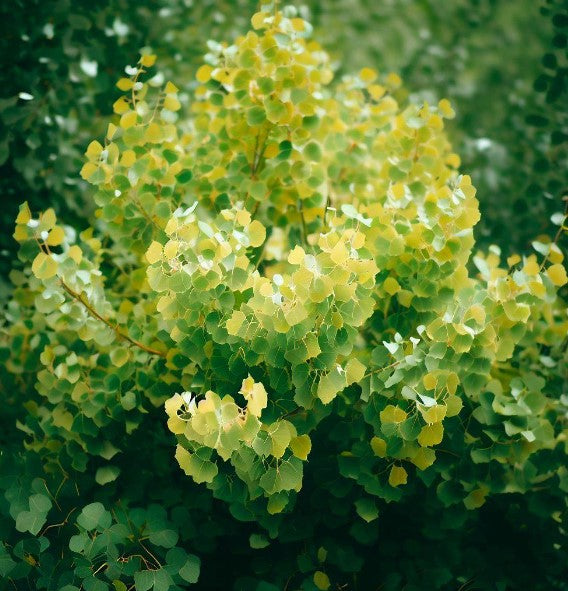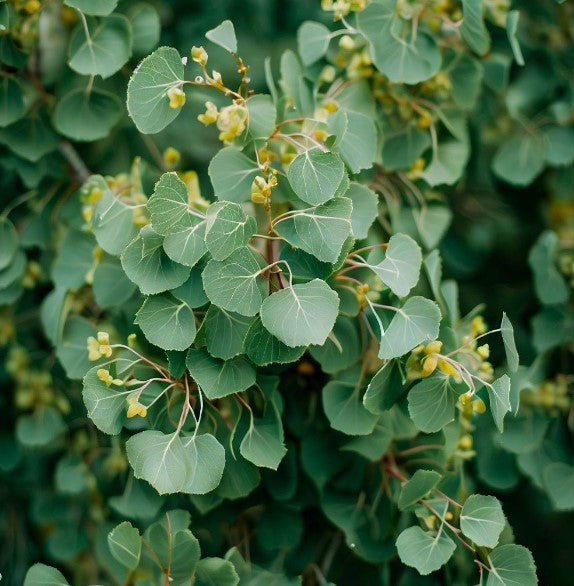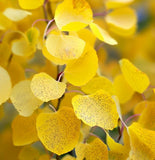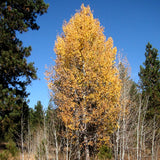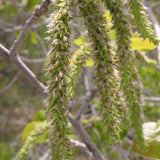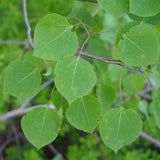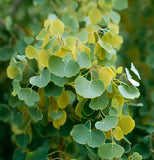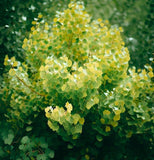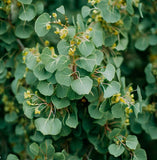Populus tremuloides (Quaking Aspen)
Populus tremuloides (Quaking Aspen) is a deciduous tree belonging to the Salicaceae family. It is native to North America and can be found across a wide range of habitats, including forests, meadows, and mountains.
The Quaking Aspen is a medium-sized tree that typically grows to heights of 20 to 80 feet (6 to 24 meters), although some specimens can reach over 100 feet (30 meters). It has a slender trunk with smooth, pale bark that becomes rough and furrowed with age. The bark is often marked with black scars from past branches.
One of the most distinctive features of Populus tremuloides is its leaves. The leaves are rounded, about 1 to 3 inches (2.5 to 7.6 centimeters) in diameter, and have long, flattened leaf stalks that enable them to tremble or "quake" in even the slightest breeze. The leaf color ranges from light green to a vibrant yellow in the fall, contributing to the tree's striking appearance.
The Quaking Aspen is a clonal species, meaning that individual trees often form large, interconnected colonies through underground root systems called rhizomes. These colonies can cover extensive areas and consist of genetically identical trees, often referred to as "clones" or "ramets." As a result, vast groves of Quaking Aspen trees can appear as if they are a single organism.
The tree produces separate male and female flowers on different trees. The flowers are small and inconspicuous, arranged in catkins that appear in early spring before the leaves emerge. The female flowers develop into small capsules that contain numerous tiny seeds with cotton-like tufts to aid in wind dispersal.
The Quaking Aspen is well-adapted to various climates and is known for its resilience and ability to colonize disturbed areas. It prefers moist, well-drained soils but can tolerate a wide range of conditions, including rocky and nutrient-poor soils. It is commonly found in areas prone to wildfires, as it can regenerate quickly from its root system after a fire.
Quaking aspen is the most widely distributed tree species in North America, growing in a variety of habitats from Alaska to Honduras. It is a popular ornamental tree and is used in landscaping and restoration projects due to its fast growth, attractive appearance, and ability to thrive in a range of conditions. Overall, Populus tremuloides, the Quaking Aspen, is a remarkable tree known for its trembling leaves, clonal growth habit, and ecological adaptability. Its presence adds beauty, diversity, and resilience to the landscapes it inhabits.
Botanical Name : Populus tremuloides
Common Name : Quaking Aspen
Height : 70 ft
Spread : 30 ft
Germination Info : Sow seed under glass.
Hardiness zone : 2-6
Other info : Seed is highly perishable. Store FROZEN until ready to be sowed.
Average seed per ounce : Approx. 75000



